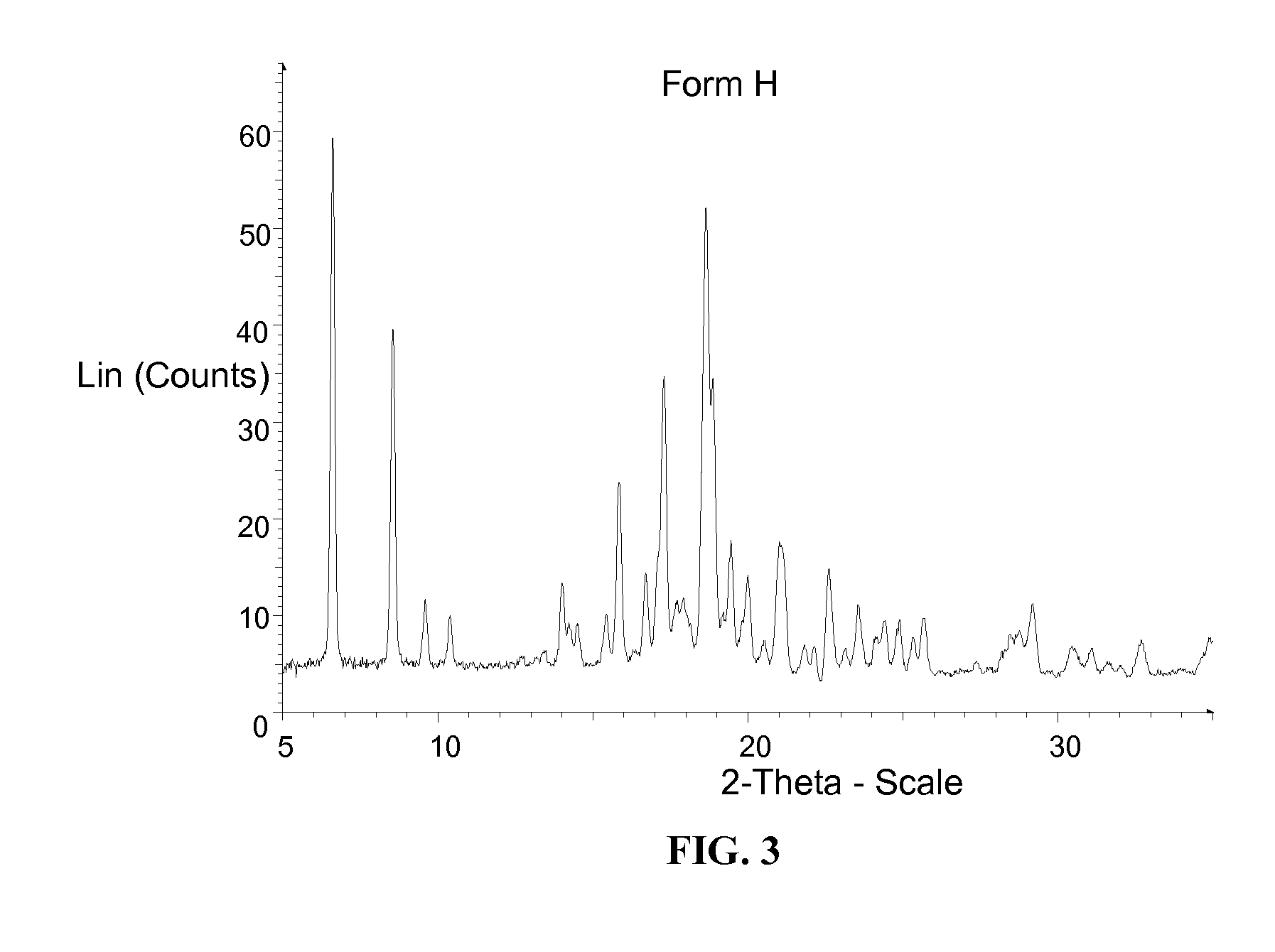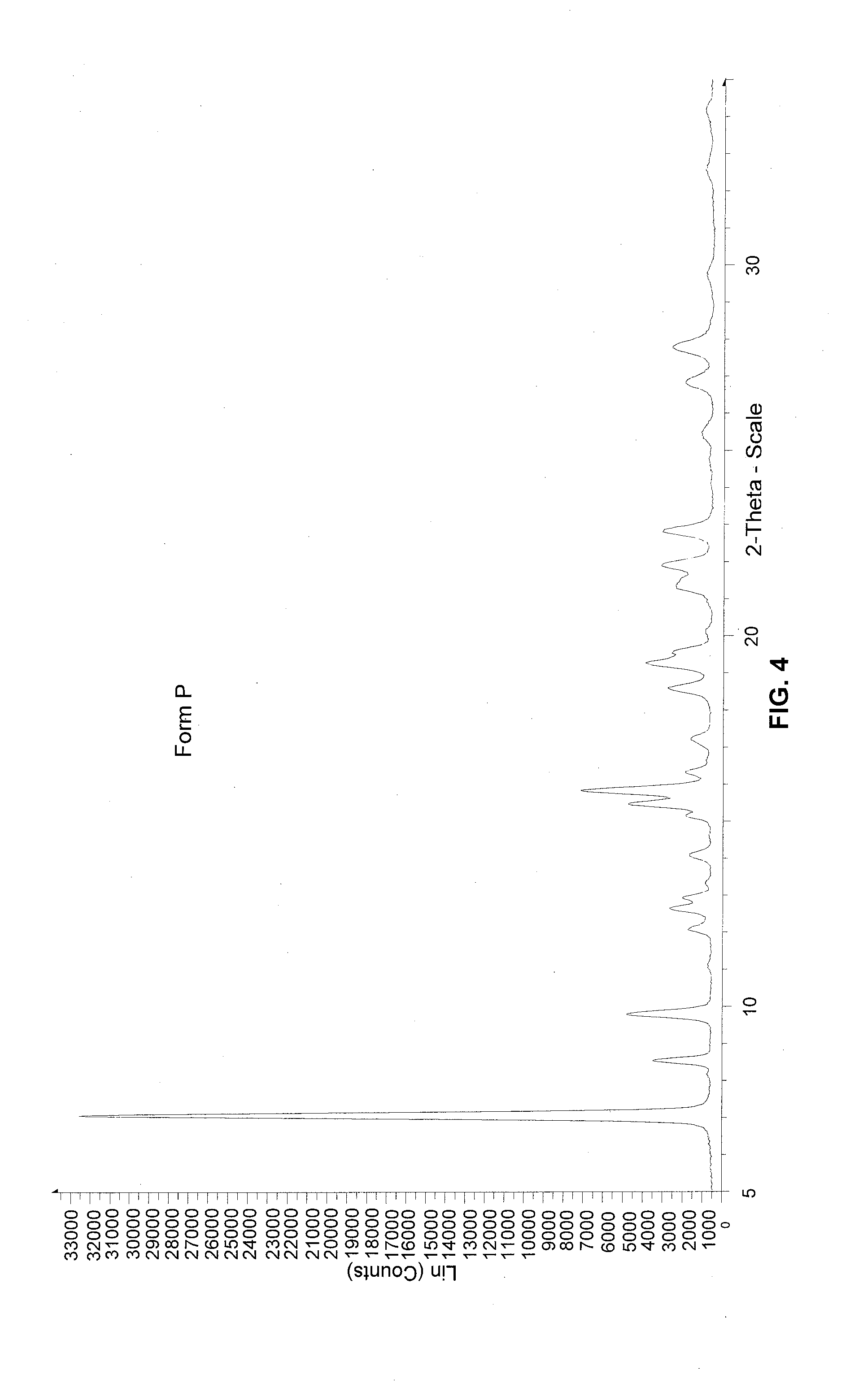Thiophene compounds
- Summary
- Abstract
- Description
- Claims
- Application Information
AI Technical Summary
Benefits of technology
Problems solved by technology
Method used
Image
Examples
example 1
General Methods of XRPD, C13 Solid State NMR, DSC Measurements
[0122]DSC Measurements
[0123]DSC was conducted on a TA Instruments model Q2000 V24.3 calorimeter (Asset Tag V014080). Approximately 1-2 mg of solid sample was placed in an aluminum hermetic DSC pan with a crimped lid with a pinhole. The sample cell was heated under nitrogen purge at 10° C. per minute to 300° C.
[0124]SSNMR Experimental:
[0125]Solid state nuclear magnetic spectroscopy (SSNMR) spectra were acquired on Bruker 400 MHz proton frequency wide bore spectrometer. Form A was acquired on Bruker 500 MHz spectrometer. Before obtaining carbon spectra, proton relaxation longitudinal relaxation times (1H T1) were determined by fitting proton detected proton saturation recovery data to an exponential function. These values were used to set an optimal recycle delay of carbon cross-polarization magic angle spinning experiment (13C CPMAS), which, typically, was set between 1.2×1H T1 and 1.5×1H T1. The carbon spectra were acquir...
example 2
Formation of Compound (1)
Method A
[0128]Compound (1) can be prepared as described in WO 2008 / 058393:
Preparation of 5-(3,3-Dimethyl-but-1-ynyl)-3-[(trans-4-hydroxy-cyclohexyl)-(trans-4-methyl-cyclohexanecarbonyl)-amino]-thiophene-2-carboxylic acid
[0129]
Step I
[0130]A suspension of 3-amino-5-bromo-thiophene-2-carboxylic acid methyl ester (17.0 g, 72.0 mmol) in dry THF (21 mL) is treated with 1,4-cyclohexanedione monoethylene ketal (11.3 mg, 72.0 mmol), followed by dibutyltin dichloride (1.098 g, 3.6 mmol). After 5 min, phenyl silane (9.74 mL, 79.2 mmol) is added and the reaction mixture is stirred over-night at room temperature. After concentration, the residue is dissolved in EtOAc washed with NaHCO3 then brine. The organic layer is separated, dried on Na2SO4, filtered and concentrated. The crude material is diluted in hexane (500 mL). After filtration, the mother liquor is evaporated to dryness to give 5-bromo-3-(1,4-dioxa-spiro[4.5]dec-8-ylamino)-thiophene-2-carboxylic acid methyl es...
example 3
Formation of Polymorphic Forms of Compound (1)
[0197]3A: Formation of Polymorphic Form A of Compound (1)
[0198]Polymorphic Form A of Compound (1) can be prepared by following the steps described below:
[0199]10 g of Compound (1) was charged to a reactor. 20 g of methanol was then charged to the reactor. The reactor was heated to 60° C. to dissolve Compound (1). The reactor was then cooled to 10° C., and left until solids of Compound (1) formed. The solids of Compound (1) were filtered. 20 g of acetone at 25° C. was added to the solids of Compound (1). The mixture of acetone and Compound (1) was stirred for 1 hour and the resulting solids were filtered. The filtered solids were dried at 75° C. for 12 hours.
[0200]Characteristics of Form A of Compound (1): XRPD data and C13 solid state NMR data of Form A of Compound (1) are shown in FIG. 1 and FIG. 5, respectively. Certain representative XRPD peaks and DSC endotherm (° C.) of Form A of Compound (1) are summarized in Table 1 below.
TABLE 1C...
PUM
| Property | Measurement | Unit |
|---|---|---|
| Temperature | aaaaa | aaaaa |
| Temperature | aaaaa | aaaaa |
| Temperature | aaaaa | aaaaa |
Abstract
Description
Claims
Application Information
 Login to View More
Login to View More - R&D
- Intellectual Property
- Life Sciences
- Materials
- Tech Scout
- Unparalleled Data Quality
- Higher Quality Content
- 60% Fewer Hallucinations
Browse by: Latest US Patents, China's latest patents, Technical Efficacy Thesaurus, Application Domain, Technology Topic, Popular Technical Reports.
© 2025 PatSnap. All rights reserved.Legal|Privacy policy|Modern Slavery Act Transparency Statement|Sitemap|About US| Contact US: help@patsnap.com



